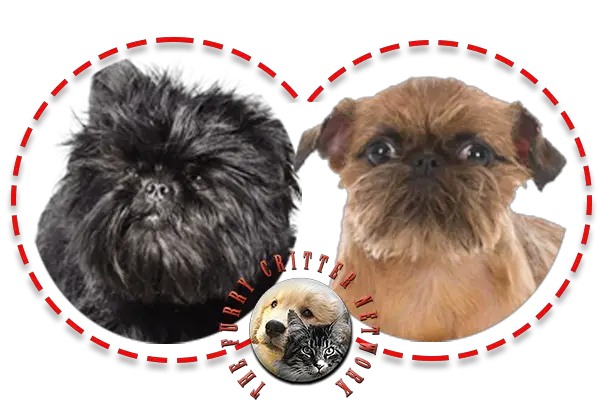Behavior
Brussels Griffon: Tough, energetic, lively, and merry, this dog is very attached to his owner. He rarely barks, but his vigilance makes him a good little watchdog.- Brussels Griffon: This lively, merry, even-tempered dog is quite tough and vigorous and makes a very good pet. Vigilant and vocal, he makes a good watchdog. He is also a good eliminator of pests.- Small Brabant: This very confident, lively, strong-willed dog is quite intelligent and makes a good pet.These dogs need firm training.
The Brussels Griffon is well-suited to apartment life but does not like being left alone. This very clean dog requires regular brushing and must be groomed every three months to maintain his handsome appearance. He does not tolerate heat well. His eyes must be checked regularly. The Brussels Griffon can live in an apartment, as long as he gets regular walks. He requires daily brushing and regular grooming. His eyes and the folds on his face must be checked regularly. The Small Brabant is a very clean city dog. Regular brushing is enough to maintain his wiry coat.
Health
Griffons have relatively few inherited health problems, but should still be tested for congenital defects, the most serious of which are Syringomyelia (SM) and Chiari-like malformation (CM). The typical life span of a Griffon is somewhere in the range of 10 to 15 years.
Birthing
Griffons usually have no trouble whelping on their own, but sometimes complications can necessitate a Caesarean section. The size of a litter is anything from 1-10 puppies. The size of the litter often determines the extent of these complications. When they are born, the puppies only weigh a few ounces (about 100 grams) and are small enough to fit in the palm of an adult's hand.
Cleft palate
One issue that is typically fatal for the puppies is having a cleft palate. It results in the puppy not receiving nourishment from the mother and eventually starvation. It is uncommon but, depending on the size of the cleft, it is possible for the puppy to survive. When it becomes older surgery can be done to close the hole.
Eyes
Most have large eyes that may require rechecks from a veterinarian.
Lacerations are a common issue amongst the breed. Because the Griffons have such large eyes and a short snout, there is very little there to protect their vision from foreign bodies. If a laceration is left untreated it can result in blindness.
As with most breeds, cataracts are a common problem as the dog ages. For many breeders it is a disappointment that the cataracts typically develop long after the dog has already been bred.
Lens luxations can be fairly common in the breed and result in secondary glaucoma
Glaucoma can also be a common issue amongst Griffons owing to the breed's facial features and eye size.
Although Griffons have a shortened snout, heat stroke is not a major concern for them as it is with other flat-faced breeds. The breed's shortened muzzle may cause respiratory problems in extreme heat, but overall they tolerate both hot and cold weather well. As with any breed, owners must use common sense and not leave them outdoors without protection from the elements or subject them to rigorous exercise during extreme temperatures, so let them in your house for cool air and some water.
Syringomyelia (SM) is a condition affecting the brain and spine, causing symptoms ranging from mild discomfort to severe pain and partial paralysis. Syringomyelia is characterised by fluid filled cavities within the spinal cord. SM occurs secondary to obstruction of cerebrospinal fluid (CSF) especially if that obstruction is at the foramen magnum. Not all dogs with SM have clinical signs. The presence of signs is correlated to the width of the syrinx and extent of spinal cord dorsal horn damage. Syrinxes can progressively expand and a dog which is asymptomatic in early life may eventually experience pain.






